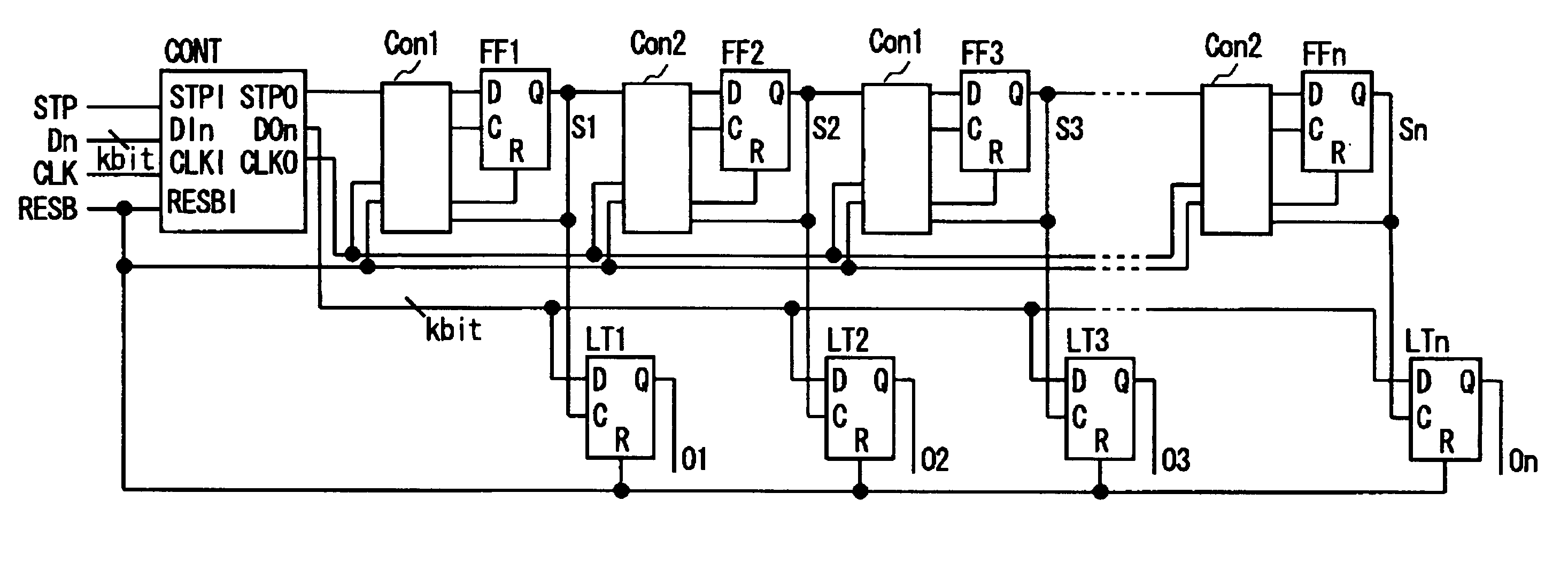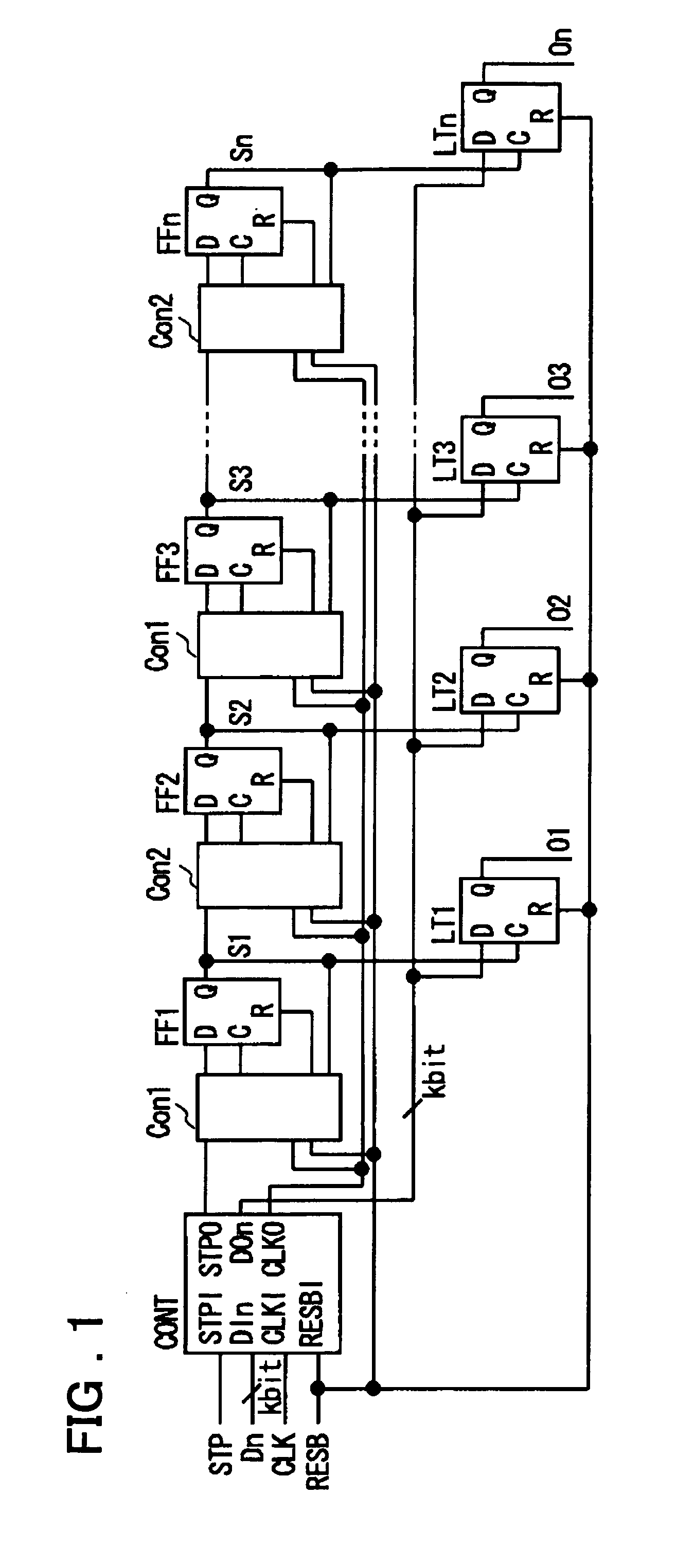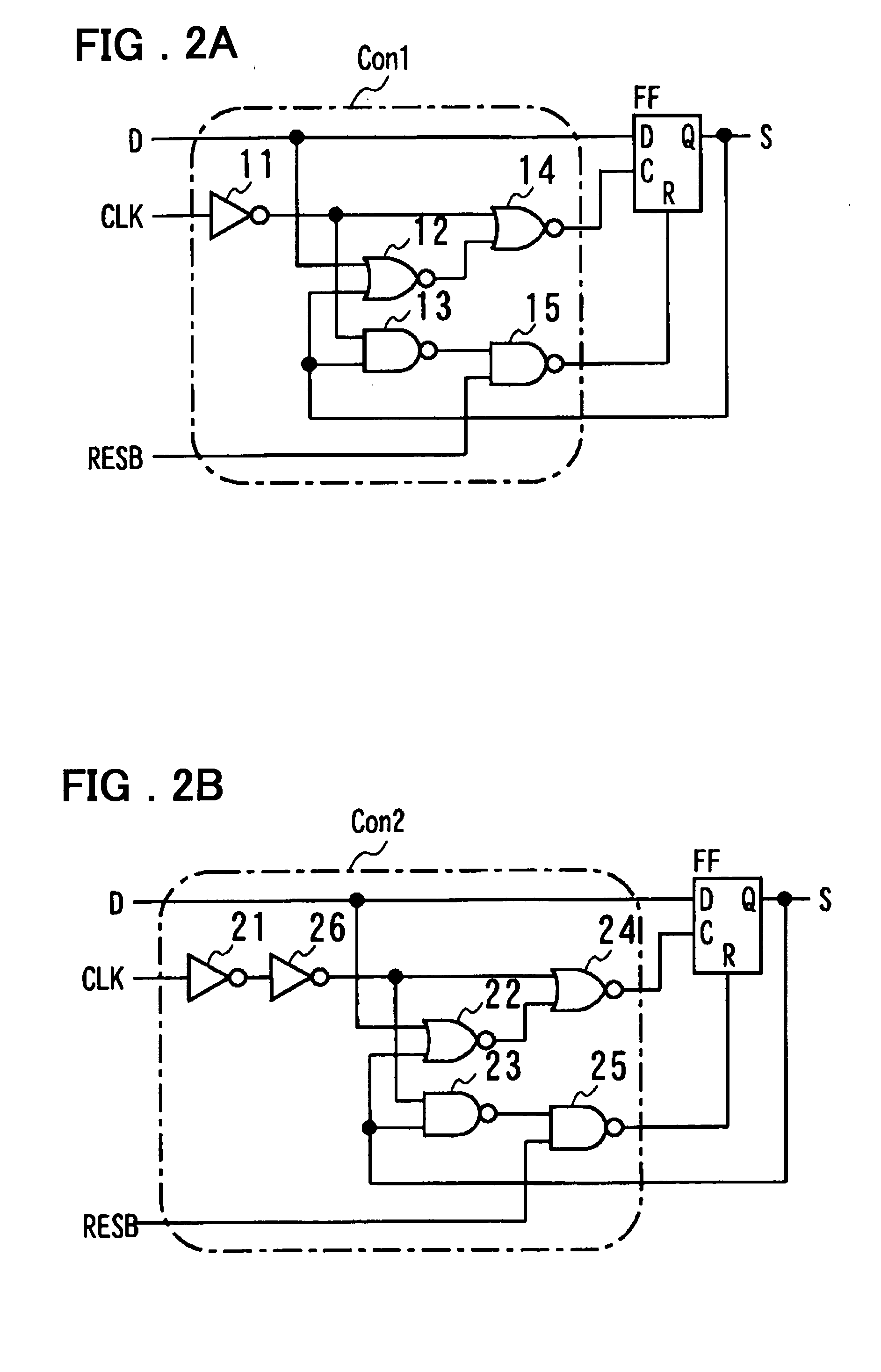Semiconductor device
a technology of semiconductors and devices, applied in the field of semiconductor devices, can solve the problems of lowering the maximum operating frequency of the circuit and increasing the power dissipation, and achieve the effects of low voltage, low power dissipation, and improved circuit operation frequency
- Summary
- Abstract
- Description
- Claims
- Application Information
AI Technical Summary
Benefits of technology
Problems solved by technology
Method used
Image
Examples
embodiments
[0039]FIGS. 2A and 2B illustrate the circuit configuration of the first control circuit Con1 and the second control circuit Con2 of FIG. 1, respectively. First, the first control circuit Con1 is explained. Referring to FIG. 2A, the first control circuit Con1 includes an inverter 11 for inverting the clock signal entered to the clock input terminal CLK, a NOR circuit 12, supplied with a signal from a data input terminal D and with an output signal of the output terminal Q of the D flip-flop FF, and a NAND circuit 13, supplied with an output signal of the inverter 11 and an output signal of the output terminal Q of the D flip-flop. The first control circuit Con1 also includes a NOR circuit 14, supplied with an output signal of the inverter 11 and with an output signal of the NOR circuit 12, and a NAND circuit 15, supplied with an output signal of the NAND circuit 13 and a reset signal RESB. The signal from the data input terminal D is entered to the data input terminal D of the D flip...
PUM
 Login to View More
Login to View More Abstract
Description
Claims
Application Information
 Login to View More
Login to View More - R&D
- Intellectual Property
- Life Sciences
- Materials
- Tech Scout
- Unparalleled Data Quality
- Higher Quality Content
- 60% Fewer Hallucinations
Browse by: Latest US Patents, China's latest patents, Technical Efficacy Thesaurus, Application Domain, Technology Topic, Popular Technical Reports.
© 2025 PatSnap. All rights reserved.Legal|Privacy policy|Modern Slavery Act Transparency Statement|Sitemap|About US| Contact US: help@patsnap.com



